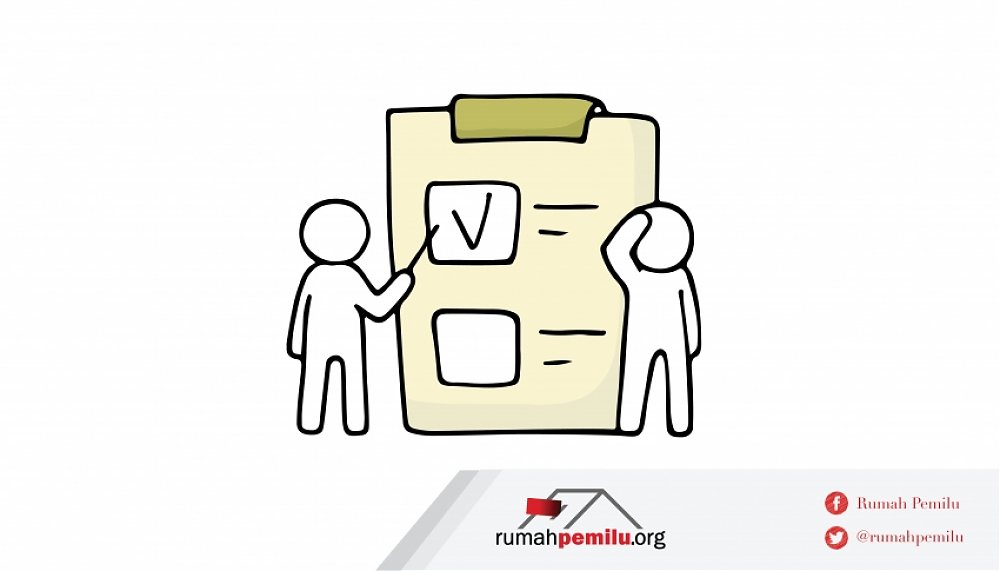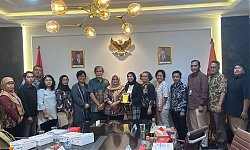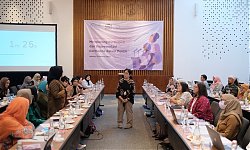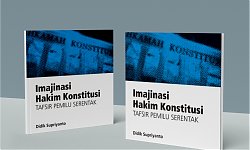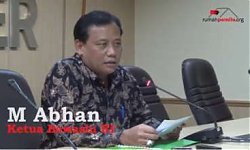July 13, 2018, three people became victims of a mass rage which was provoked by misinformation in the form of a video circulating on WhatsApp regarding a group of people distributing candy to kidnap children in the village. This incident is not the first. Misinformation on WhatsApp has taken the lives of two dozen Indians in the first half of 2018 alone.
May 22, 2019, disinformation persisted throughout the stages of the Indonesian election that the election was fraudulent, sending thousands of masses descending on the front of the RI Bawaslu building. 6 people died in the riot.
Then January 6, 2021, dis/misinformation and provocative narratives caused a group of people to storm the United States Capitol building after the announcement of the results of the presidential election. 5 people died in the crowd.
These incidents, plus the 2022 Kenya election case, show that dis/misinformation is not just a matter of lies being spread, but has the potential to be deadly. Disinformation is perhaps an even more damaging digital attack on elections than other digital attacks.
Disinformation in video format has been circulating ahead of the 2024 elections
Many keywords can be used to track election 2024 disinformation on social media. Some hashtags can be easy, such as #pilpres2024, #pemilu2024, and #pemilucurang. Or you can add the name of the popular politician on the hashtag.
On Youtube, for example, I found a pattern of disinformation content published by several YouTube channels. First, the disinformation videos contain clips from the press and political influencer podcasts. Second, a truncated statement from a political influencer or well-known figure is taken to strengthen the conspiracy theory of election fraud. Third, the use of the hashtags #newslatest #newslatest #kabarviral and the like, which seems to be made to increase the virality of the content. Several channels spreading disinformation videos have even adopted names that impress themselves as credible media, such as Kabar Aktual Official and UPDATE.
This pattern has slightly shifted from disinformation videos in the 2019 Election. In the 2019 Election, there was a lot of disinformation in amateur videos (although there was already an edited videos with cut media clips). For example, someone's amateur video seems to prove that there is fraud in the KPU's Counting Information System or Situng. Or also an amateur video recording of a meeting that says the KPU server is in Singapore. Currently, the videos that are circulating are videos that are packaged like news coverage, an effort that certainly requires greater effort to cut clips, create narratives, and edit videos.
The hashtags used in the dis/misinformation video during the 2019 election also clearly misled voters by framing the election fraudulently. The hashtag #KPUcurang #kpusalahimputdata #kputdkmain was actually used.
Other new things are also a challenge. A study by the Institute for Strategic Dialogue (ISD) in November 2022 shows that there is a lot of disinformation being spread through short videos on Instagram, Youtube and Tiktok. In fact, dis/misinformation was also conveyed by influencers in live streaming videos. Of course it's not easy to debunk videos, especially live streaming videos.
In the 2022 Philippines Election, many Bong Bong Marcos influencers and supporters are using the live streaming video strategy to spread dis/misinformation. There are no effective efforts that can be replicated for Indonesia.
Short videos containing election disinformation can also be found on YouTube and Tiktok. Indonesia must be careful, because the popularity of short video content continues to increase. According to Search Engine Journal, YouTube Shorts videos were watched by 30 billion per day in the first quarter of 2022, quadrupling from the first quarter of 2021. Not to mention the popularity of Tiktok and Instagram Reels.
According to research by Shyam Sundar, Maria D Molina and Eugene Cho, disinformation in video format is more trusted by the public than text and audio disinformation. The urge to “believe what you see” and “If something looks real, then it is credible” make video an even more dangerous form of manipulation. In short, videos have a stronger psychological effect, especially when we feel involved or interested in the issue. In contrast to information in text and audio formats where we have to imagine a reality.
Concocting a recipe for counteracting disinformation in video format
Maybe we ask, what do social media platforms do with content containing dis/misinformation, hate speech and incitement. Also, you may ask, what is the platform prepared to do to hinder the virality of content that is widely used to spread false information.
Looking for new ideas, as a first step, evaluating content moderation on a regular basis is important. Platforms must also prioritize reports of dis/misinformation in video content. Reviewing a video is a time-intensive work. Technological solutions may be needed.
In addition, it is also good for platforms to have a special team to monitor election hashtags that are created to deceive voters and discredit the election process and results. The hashtag election fraud conspiracy is in vogue at any election these days, and become a gap for content moderation that the platform has made. Malicious content that does not appear in certain keyword searches can still be found if users search using hashtags.
Another recipe that can be tried is to carry out a dis/misinformation monitoring movement on social media, including reporting when you find disinformation on closed platforms such as WhatsApp. Monitoring dis/misinformation requires large resources involving many people. Youth can be invited to get involved and receive training in identifying dis/misinformation content, and how to report.
The last recipe, again, is to provide election literacy. Sundar, Molina and Cho's research shows the important role of one's knowledge of the influence of disinformation. The more a person is involved and has knowledge regarding an issue, the more critical he/she will be in receiving information.
In an election literacy effort in rural areas, where people get more information from traditional media, such as television, radio, local newspapers and word of mouth, the role of the media is crucial. The media cannot provide election information as limited to contestation, but must provide information about the election process. Traditional media is the main source of information for people in rural areas. Election literacy will be efficient and effective if the media plays a role. []
This article is translated by Catherine Natalia.

